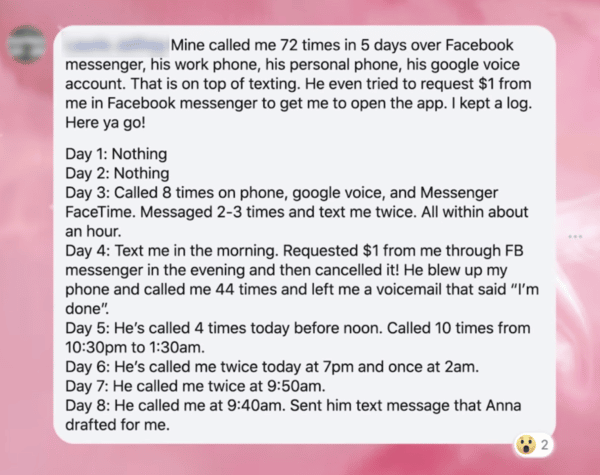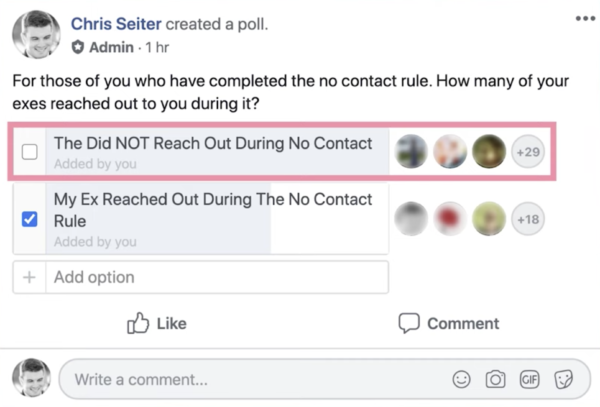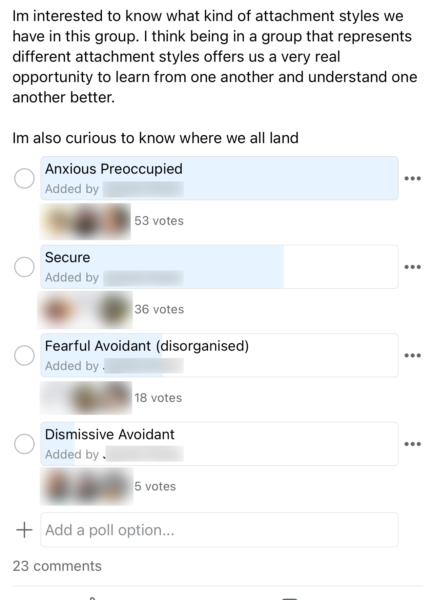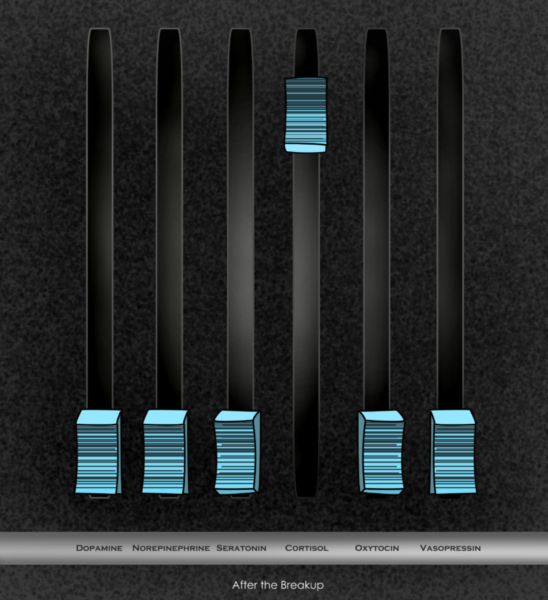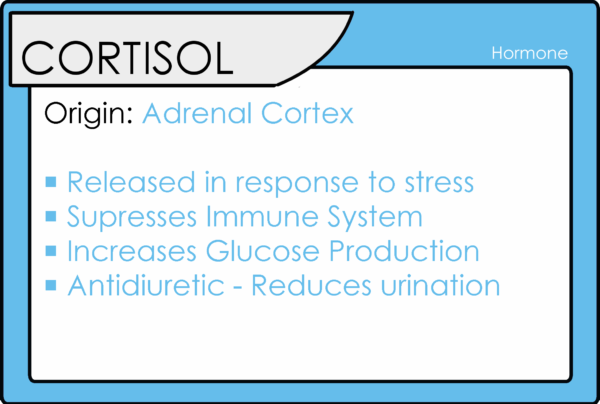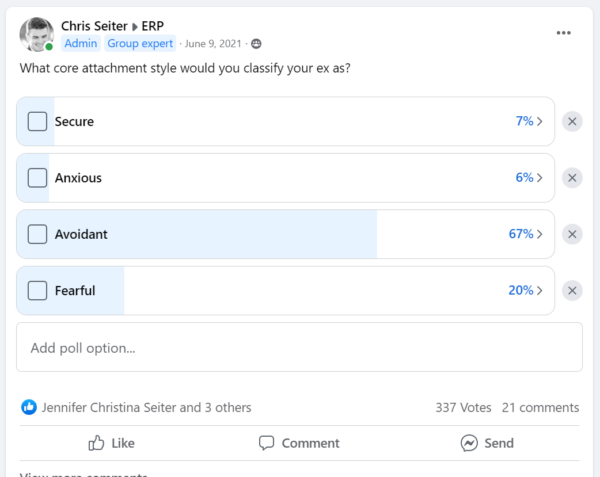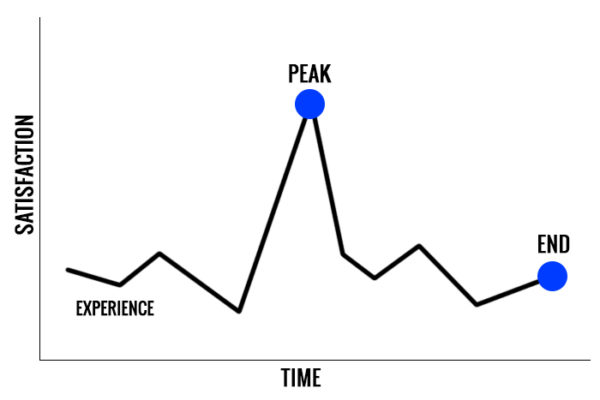Today, we’re delving into what psychologists have to say about the no-contact rule and why I only “kind of” agree with them.
For the past three hours I’ve been wracking my brain on how I was going to structure this discussion.
I believe the most insightful approach is to first present you with the framework of how I perceive the no-contact rule — essentially, my take on it. Then, I’ll share the research I’ve unearthed, highlighting where psychologists either align or diverge from my conclusions. Consider this to be the ultimate check of my methods.
I’ll be holding my own feet to the fire to see how I stack up. If I can’t defend my approach then… well, you’ll see 😉 .
Let’s begin!

What Are Your Chances of Getting Your Ex Boyfriend Back?
Take the quizMy Take On The No Contact Rule
You’ll often hear me refer to the no-contact rule as me having this different outlook on it.
Why?
Well, my version of the no-contact rule is defined as a period of time where you cut off all conceivable communication with an ex after a breakup. The importance of this is that it should not be used to make your ex miss you; instead, it should be used to rebuild your own life so that you outgrow your ex. By doing this, the no-contact rule can have the added benefit of making an ex miss you.
A lot of times, I’ve found that people judge the success of a no-contact rule based on how likely it is to get a result like this.
This is a screenshot of one of our clients who was using a no-contact rule on their ex, and as you can see from the screenshot, this ex was very, very anxious.
Yet, I have found that this tends to be the exception to the rule.
Most of the time, exes will not reach out to you during the no-contact rule,
And it can feel as if the no-contact rule is failing as a result. A lot of my peers in the breakup industry — and I refer to the breakup industry as essentially people who are teaching others how to get their exes back — assume that the no-contact rule can make your ex miss you, and technically that’s correct.
Usually, they’re basing it on some version of psychological reactance.
Psychological reactance basically states that people are born with certain behavioral freedoms, and when you take those behavioral freedoms away, they’re a lot more likely to respond or react in ways to get that freedom back.
By going to a no-contact rule, you are removing your ex’s ability to converse with you, and as a result, they’re likely to respond to you or react to you to try to get that freedom back.
If you need proof of that, simply look at the screenshot I just attached above.
This is a prime example of psychological reactance rearing its ugly head, but I would argue that that is not necessarily making your ex miss you. That is tapping into an ex’s insecurities to try to get them to reach out to you. Having them miss you is almost more of an internal process, and it’s not the norm. The reality is, if you want to make your ex miss you, the important part is you need to use the no-contact rule to outgrow your ex.
Learning To Outgrow Your Ex During No Contact
The vast majority of our clients have an anxious attachment style.
They have a lot of trouble moving on from their exes.
The problem is, when you do a no-contact rule, it exacerbates this person’s anxious attachment style. It can make them even more anxious or even more worried, and they’re thinking about their ex constantly.

What Are Your Chances of Getting Your Ex Boyfriend Back?
Take the quizThis keeps their cortisol at a really high level, which makes them more stressed, and on and on it goes.
For reference of what happens to cortisol during a breakup look at this,
Cortisol is the stress hormone.
So, after a breakup it shoots way up and keeps you more stressed.
What we’ve found, through interviewing people who’ve successfully used the no-contact rule and successfully gotten their exes back, is that the single most important thing for them to do during a no-contact rule is to outgrow your ex.
Essentially, get over them.
The psychology behind why we believe this works is that, it’s true, most of our clients have an anxious attachment style, but most of our clients’ exes have a dismissive avoidant attachment style.
People with dismissive avoidant attachment styles don’t really open up or aren’t interested in conversing with an ex unless they think that ex is over them. By using the no-contact rule to outgrow and move on from your ex, this is why you typically see better results with that approach.
This is where you actually see them beginning to miss you. The other, I think, important thing to note about my version of no-contact is that it’s specifically designed for individuals who are trying to get their exes back.
Not all versions of no-contact, as we’re about to see, are designed that way. In a nutshell, that is my approach slash my view on the no-contact rule.
But what do psychologists say?
Psychologist Take #1: Michelle Dourin
The first one is from a psychologist or therapist named Michelle Dourin.
She wrote this article that’s really great, by the way. I highly recommend you read it on “Psychology Today,” basically arguing why you shouldn’t contact an ex after a breakup.
She is actually pro no-contact rule and hones in on the more psychological concepts that occur after a breakup.
Her first big argument for why you should not be contacting your ex after a breakup is “positivity bias.”
Positivity Bias
Positivity bias is basically an argument where she was saying your memory might be tricking you into believing the past was really better than it was.
Here’s an entire lecture on it if you are curious:

What Are Your Chances of Getting Your Ex Boyfriend Back?
Take the quizThe first thing that came to my mind when I was reading her article and seeing her talk about this was the peak-end rule.
If you’re not familiar, the peak-end rule is this research that was done years ago on human memory. It shows how we don’t remember experiences based on the entirety of the experience but rather based on two distinct points: the peak moments and the end moments.
I think positivity bias is looking at those positive peak moments, essentially only remembering those, and forgetting maybe about the entirety of the experience or the negativity of the experience.
Fading Effect Bias
But she goes on to also mention the “fading effect bias.”
She says one of the other reasons why you shouldn’t contact your ex after a breakup is that, over time, it becomes more difficult to recall negative feelings about past experiences.
So as time goes by, the memories, feelings, or negativity that you’re experiencing with the breakup actually begin to fade. It becomes harder to recall those feelings about past experiences.
Couple this with the positivity bias, where you’re only focused on positive, nostalgic-type memories, and you create a situation where you essentially are picking and choosing what you remember, perhaps forgetting some of the crucial elements.
The Obsession Issue
But I think the point that resonated most with me when reading her article was her emphasis that the more you contact your ex after the breakup, the more you signal to your ex that you’re still obsessed with them.
This completely aligns with my observations.
As I’ve mentioned, most of our clients have anxious attachment styles, while most of their exes have avoidant attachment styles.
The one thing that repels avoidant exes more than anything else is someone who constantly pesters them, seeks reassurance, needs help, or appears obsessed with the breakup. And the more you contact your ex after a breakup, according to Michelle Dourin, the more you seem obsessed with that ex.
Psychology Take #2: Dr. Lira De La Rosa
Essentially, her argument is that she supports the no-contact rule. She believes that you should implement it, but she doesn’t concur with breaking the no-contact rule at the typical 21 to 45 day mark that I recommend.
Instead, she suggests that you shouldn’t contact your ex until you’ve lost all feelings for them, which typically spans around three to six months.
She cites a research paper titled “Addition Through Subtraction: Growth Following the Dissolution of a Low-Quality Relationship.”
So, in essence, she’s arguing that while the no-contact rule is an effective approach to handle a breakup, you shouldn’t contact your ex at all until you’ve moved on from them.
This is where I somewhat agree with her.
I concur because I believe she’s onto something.
One of the essential steps is that you need to outgrow your ex and appear as if you’re moving on if you’re hoping to reunite. That would be the ideal time to reach out.
However, there’s a flaw in her method. Three to six months is a substantial duration. If your aim with the no-contact rule is to eventually get your ex back, then this timeframe is arguably too extensive.
I’m not disputing her methodology; I believe her findings are robust. However, if your desired outcome differs from simply moving on from your ex, then three to six months might be overstretching it.
I frequently discuss a notion called the “habit rule.”

What Are Your Chances of Getting Your Ex Boyfriend Back?
Take the quizOn average, it takes 66 days to establish a habit. This means that with any no-contact rule exceeding 66 days, your ex could genuinely adapt to life without you.
Hence, in just 66 days post-breakup, your ex might entirely move on from you. That’s precisely why we advocate for a maximum no-contact period of 45 days.
Psychology Take #3: Therapist Anna Sergent
And then there’s therapist Anna Sargent, who penned a compelling article for Newsweek.
Essentially, she supports the no-contact rule but adds significant stipulations.
The primary departure I note in her stance on the no-contact rule is that, according to her, it involves blocking and removing that individual from all social media platforms, refraining from calls or texts, and avoiding any contact with their friends or family.
Typically, in our coaching practice, when recommending the no-contact rule, we don’t advise clients to eliminate their exes from social media platforms. We believe that these platforms can be a powerful tool during the post-breakup period.
However, it’s crucial to recognize that clients come to us for guidance on getting their exes back. Thus, I always interpret the no-contact rule through that prism. Anna does not, and her subsequent point emphasizes that.
Anna contends that the no-contact rule may not be compatible with specific attachment styles. Quoting directly from her Newsweek piece:
“If a person has felt abandoned as a child, detaching from someone can be more challenging, potentially sparking separation anxiety. Individuals with insecure attachment might feel especially devastated and forsaken after suddenly severing ties with an ex-partner. Such people often fault themselves for the relationship’s end, harboring thoughts like ‘I’ll never find someone again.'”
Her premise is that for those with an anxious attachment style, the no-contact rule may not be advisable. The challenge is that the majority of readers perusing her article, or mine for that matter, likely grapple with anxiety.
It’s a delicate issue.
As I’ve mentioned, I partially concur with Anna. Addressing one’s anxiety should take precedence. I would never advise an approach that might amplify someone’s anxiety. However, my perspective is that it’s a short-term struggle.
If someone adopts the no-contact rule, it’ll undoubtedly be challenging initially. And as Anna highlights, individuals may resort to self-blame or fall into detrimental thinking patterns.
Yet, from what I’ve observed, this doesn’t persist indefinitely, especially if one utilizes the no-contact phase to outgrow their ex, actively addressing their anxiety.
Just yesterday, I had the privilege of interviewing an accomplished psychologist and counselor specializing in high-functioning anxiety. A key takeaway from our discussion was the importance of a disciplined approach to managing anxiety: recognizing and naming emotions as they arise, something many overlook, and then redirecting these feelings to elicit a positive self-impact.
My Key Takeaways
When examining the perspectives of these psychologists in relation to my own, certain intriguing commonalities emerged. The initial observation is that the majority of these therapists or psychologists advocate for the no-contact rule, albeit with varying intensity and stipulations.
I find my views most closely mirroring those of the first psychologist I mentioned, Michelle Dourin.
She anchors her perspective in the positivity bias and the fading effect bias, emphasizing that constant outreach to an ex-partner can appear obsessive. While her article doesn’t delve deeply into the duration she might suggest for a no-contact rule or explore its potential benefits, I generally concur with her views.
Kayla Rosa also champions the idea of emotionally detaching from an ex before initiating contact.
However, I part ways with her when she prescribes an extended three to six-month duration for the no-contact period. Though she supports her stance with research, it feels excessive, especially if reconciliation with the ex is the primary aim.
Anna Sargent’s viewpoint is the most divergent from mine.
Her main concern revolves around the potential adverse effects of the no-contact rule on individuals with insecure attachment. Given that a significant number of individuals interested in this rule likely exhibit insecure attachment traits, I see the no-contact period as a golden opportunity for personal growth and the development of a secure attachment style. Perhaps that was Anna’s intention, but my research didn’t necessarily indicate this.
Ultimately, the crux of the matter boils down to the core intention behind endorsing the no-contact rule.
My clients often seek my counsel to enhance their chances of rekindling their relationships. While some may criticize this approach during the post-breakup phase, I always underscore the importance of deferring any decisions until the no-contact period concludes. This way, they can assess their genuine desires with a clearer perspective.
On the other hand, many individuals seeking guidance from therapists and psychologists are on a quest for self-understanding and healing.
Hence, these professionals can afford to present the no-contact rule primarily as a tool for emotional healing and detachment from the ex, rather than a strategy to win them back.
My research has illuminated that these two objectives might not be as distinct as they appear.
Utilizing the no-contact rule to move past an ex paradoxically increases the likelihood of re-establishing the relationship.
